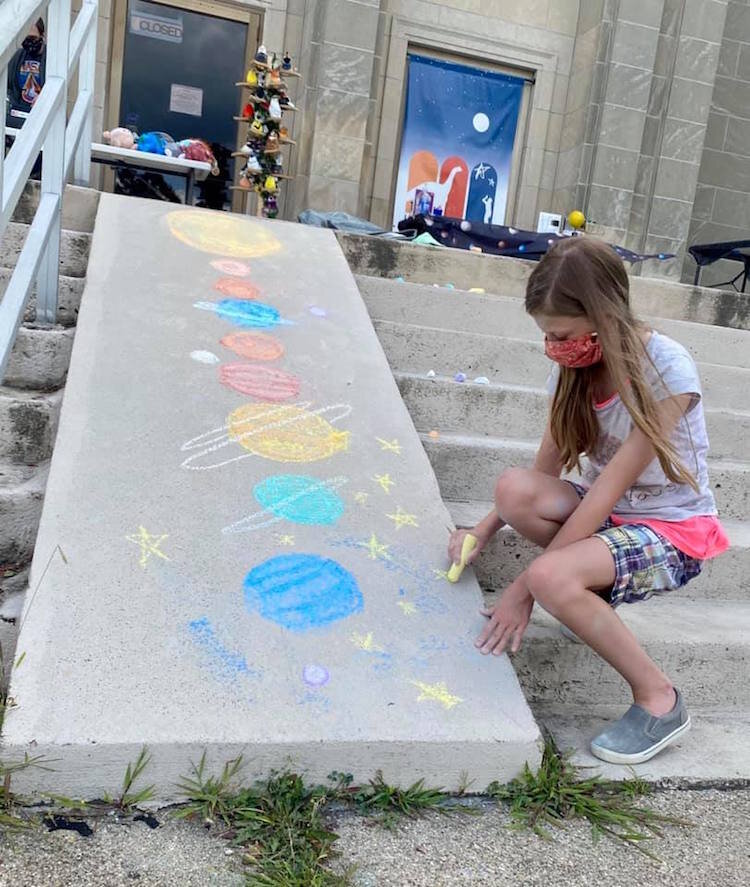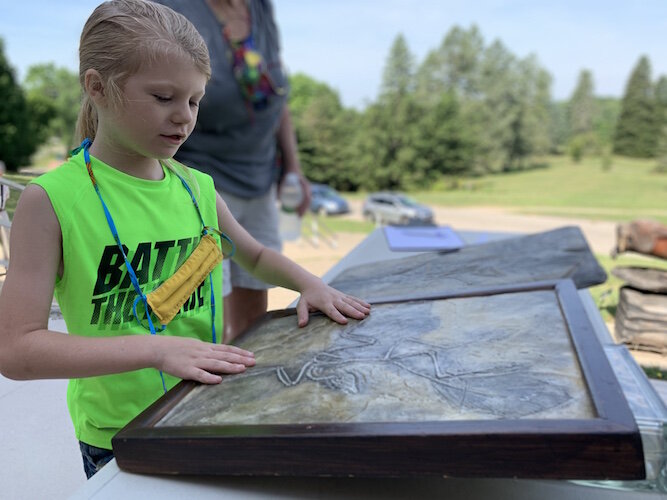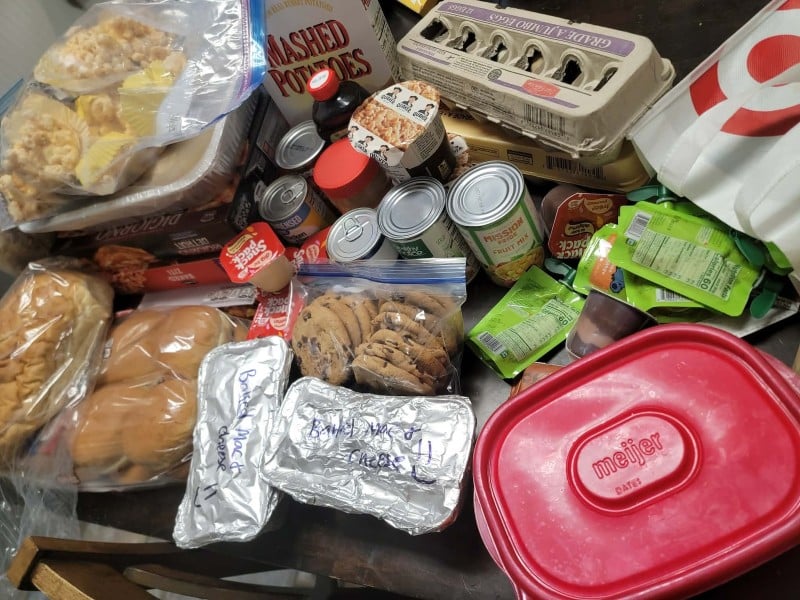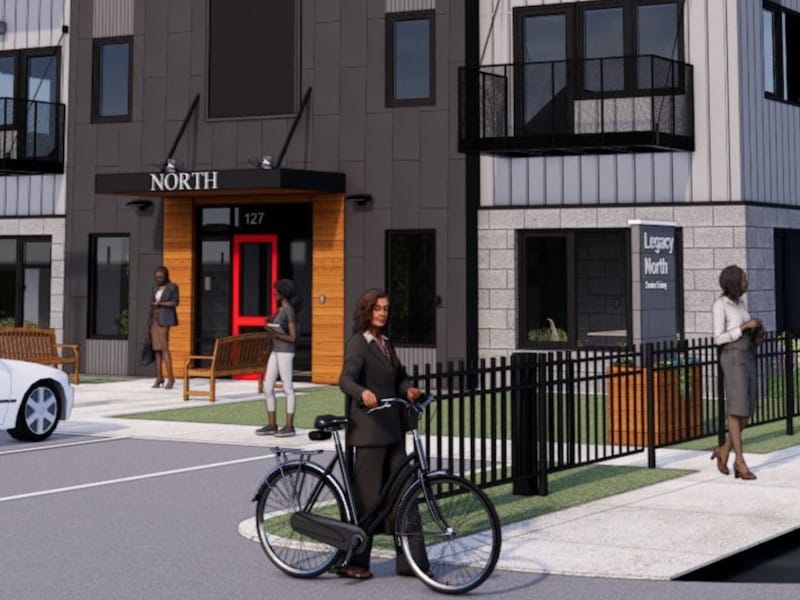Getting creative: Kingman Museum hosts summer camp outdoors on the steps as finances tighten
One out of every three museums may find themselves running out of money as revenue from patrons and donors runs out as a consequence of COVID-19 shutdowns. Will Battle Creek's Kingman Museum be able to make to the other side?
Editor’s note: This story is part of Southwest Michigan Second Wave’s On the Ground Battle Creek series.
The Kingman Museum’s vast collection of well-preserved artifacts and items is rooted in science and culture and while Executive Director Eltine DeYoung would like to fully re-open, she is committed to following the science as it relates to COVID-19 and its deadly implications.
“I know that there are a few institutions like museums that have reopened or reopened only to members, but there are not a whole lot that have done that and those that have are museums with larger indoor space,” she says. “The Kingman Museum is small. We have not felt comfortable enough to re-open because we want to make sure our staff and visitors can be kept safe. We also have to do quite a bit of updating of our exhibitions because they’ve been developed as hands-on experiences.
“Before we can reopen we need to invest the time and money to update those exhibits to keep our visitors safe.”
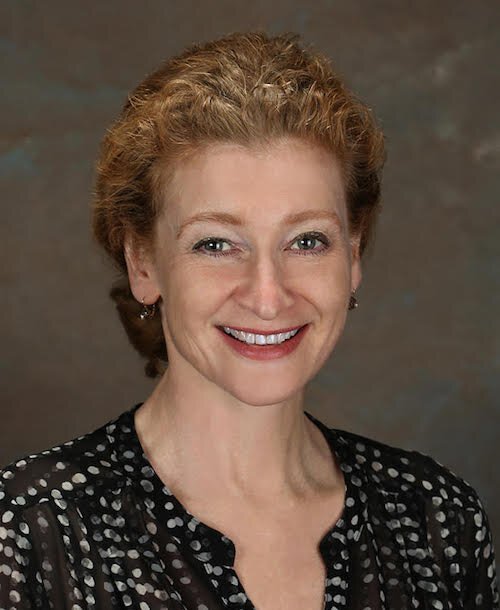
After closing its doors in mid-March to comply with state-mandated closures, the museum, which was established in 1871, began offering outdoor programming in early July with a Summer Science Camp on Wednesdays for children and youth. The camp takes place on the museum’s terrace and offers opportunities to see some of the items normally displayed inside, participate in science activities, and decorate the steps leading up to the museum entrance with sidewalk chalk, all while following social distancing guidelines, including the wearing of masks.
“We wanted to bring our staff back on board. They could not work while the museum was closed, so we’re trying to figure out a way to bring them back,” DeYoung says. “We also wanted to find ways to keep the connection with our visitors.”
The camp made sense because it is something that can be done outside with minimal risk. As a way to enhance interaction with individuals who would be visiting the museum in-person, the museum staff is using social media such as Facebook to put a focus on their collections and ask questions and offer explanations about what people are seeing. DeYoung says they also want to hear from the general public about what they want to see.
An online platform enabled the museum to provide educational experiences to students participating in the 21st Century program offered by the Battle Creek Public Schools, which partners with Kingman, DeYoung says.
Relying on online options is a step museums throughout the United States have taken to maintain connections with their patrons, according to the American Alliance of Museums based in Arlington, Va. The AAM has information on its website about maximizing the use of social media to drive online traffic to museums and offering remote viewing and learning opportunities such as virtual online courses and summer camps.
Nathan Kemler, president of the Michigan Museum Association, says as museums across the state are re-opening or trying to re-open there is a push to reinvent themselves.
“The basic formulas for museums hasn’t really changed drastically. The challenge really has been for innovation and there’s a push to figure out how else we communicate and provide services,” Kemler says. “Museums are re-defining some of their core services and thinking about things not just for the short-term, but long-term because it’s more about the more long-term now.
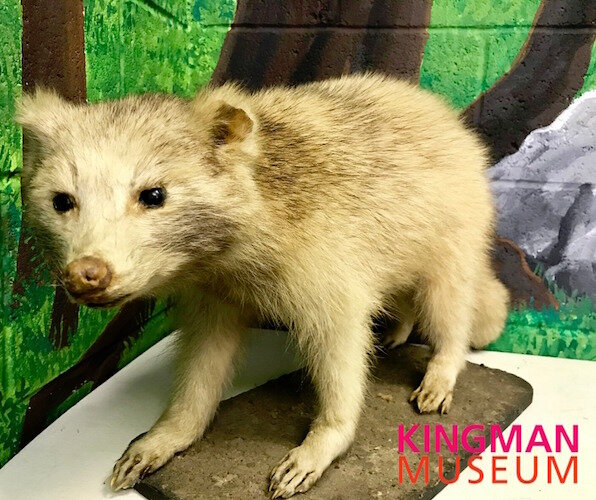
“That’s where we’ll see museums come through this on the other side as re-defined and stronger defined.”
“Ever since the COVID-19 pandemic forced museums of all kinds to close their doors, many have responded by shifting their attention to engaging audiences through virtual and remote channels,” says Brendan Cieko, founder and CEO of Cuseum, an American startup company that develops products such as mobile applications, digital membership cards, an augmented reality platform for museums, public attractions, and cultural nonprofits.
Through social media initiatives, virtual tours, live-streamed events, and an array of digital content, cultural organizations have made substantial efforts to expand their digital offerings throughout the period of lockdown Ceiko says in a blog on the AAM website.
“Now, more than three months later, many organizations are not only facing the ongoing question of how to engage audiences; they are also facing a significant loss of revenue. Although many are beginning to open their doors to visitors once again, they are operating at reduced capacity and may be facing restrictions on physical events, summer camps, and other types of special gatherings,” Cieko says. “Organizations are also preparing for the possibility that a second wave of the coronavirus may push them towards temporary closures once again. Consequently, even as they reopen, many are recognizing the critical importance of digital content and engagement tools to not only to engage, educate, and inspire audiences, but also to serve as a new source of revenue.”
As DeYoung and her staff continue to explore online options, they also are trying to maintain some element of in-person engagement with the Summer Science Camp which is free. DeYoung says they ask for donations as a way to infuse cash into a revenue stream that has been severely impacted by the March shutdown and the ongoing financial fallout. The museum had an annual budget last year of $300,000.
“We’re really relying on donations because that’s a huge part of our revenue,” she says.
The donations received now are not enough to sustain the museum as it seeks to stay afloat until it can fully re-open.
“We are relying heavily on grants and with the museum being closed our revenue stream has pretty much stopped,” DeYoung says. “We do provide free admission but (under normal circumstances) we have lot of schools come through and they pay for the programs.”
At the time the museum closed its doors, the 12-member part-time staff was preparing to host school field trips in April and May and a few large events for Michigan State University that were all cancelled. DeYoung says all the summer programming, which is a huge source of income for the museum, also was cancelled.
“We were able to do our annual appeal to donors, but people’s situations have changed financially,” DeYoung says. “My main focus now is on bringing money in. And I work on that.”
Most museums don’t have reserve funding and rely on diverse revenue streams that include earned income, grants, and private individual giving. Kemler says hardly any museums have full endowments for operations and keeping their open.
“By the nature and definition of it being a nonprofit in our state, the crux of the issue is that not only is earned income going down, but most museums don’t earn enough revenue to keep their doors open,” he says. “It’s a very complicated economic challenge for a lot of museums that are trying to prioritize what is critical to their community’s right now.”
Of the 600 museums in Michigan, Kemler says that many have had to lay off staff. He says more than 91,000 people are employed by these museums. They are considered part of the state’s creative industries and they have paid $5 billion in wages since 2014. An additional $1 billion is spent by visitors to arts and cultural attractions such as museums.
When the Kingman’s revenue streams essentially dried up, DeYoung says she was concerned about securing funds to make payroll and to pay and cover operational costs. Including herself, there are three employees currently working with the remainder on furlough. She says she has been writing grant after grant and considers the museum fortunate to have received a $20,000 forgivable loan through the Payroll Protection Program.
Grants also have come in from the Battle Creek Unlimited, Michigan Humanities Council through the National Endowments for the Humanities, and the Michigan Council for Arts and Cultural Affairs through the National Endowment for the Arts.
Joe Sobieralski, president and CEO of BCU, says his organization gave Kingman a $4,000 grant because the museum has been a long-standing treasure in the community.
“For generations, families, and children have patronized the museum for field trips or family outings,” Sobieralski says. “We felt it necessary to assist them during this time to preserve this cherished landmark within our community for generations to come.”
The American Alliance of Museums (AAM), the only organization representing the entire scope of the museum community, issued a press release on July 22 that says, “one out of every three museums may shutter forever as funding sources and financial reserves run dry. Without near-term assistance from governments and private donors, hundreds of directors reported their museums may not survive the financial crisis brought on by the pandemic.”
DeYoung says she thinks there is a possibility that the Kingman could be one of the ones to close permanently because those in positions to make grants have to look at what communities need to meet real, basic needs that are increasing daily because of the pandemic.
“I can advocate that it’s important to have arts and culture available, but it’s really what the grantors think,” she says. “I think organizations may want to go more towards collaborating or being partners so that they can still provide services and accomplish their mission and share costs. By sharing the same location, I’m hoping that the museum can maybe form some collaborations or partnerships with other organizations.”
This AAM estimate that one out of every three museums may disappear was the result of a survey of 750 museum directors done in June that confirmed early estimates of the dire economic harm to museums caused by the COVID-19 closures that are expected to continue due to renewed outbreaks across the country.
“Museum revenue disappeared overnight when the pandemic closed all cultural institutions, and sadly, many will never recover,” says Laura Lott, President & CEO of AAM, in a press release. “Even with a partial reopening in the coming months, costs will outweigh revenue and there is no financial safety net for many museums. The distress museums are facing will not happen in isolation. The permanent closure of 12,000 museums will be devastating for communities, economies, education systems, and our cultural history.”
The loss of any museum has a huge impact on the community it calls home, DeYoung says, “specifically with Kingman because it has such a deep history within the community. If you lose an institution like that, you lose your history and identity.”
The majority of people who grew up in Battle Creek and attended schools here have fond memories and can specifically recall seeing certain exhibits in conversations with DeYoung and her staff.
“I had high school students in here earlier this year who were working on a video project and I asked them what they thought and they said they want to bring their grandchildren here,” she says. “To close would mean to lose the educational and recreational value for our community.
“It’s also about quality of life and placemaking. You no longer have a destination like this to go to and a memory about it that you can share. It really is about the culture and history.”


